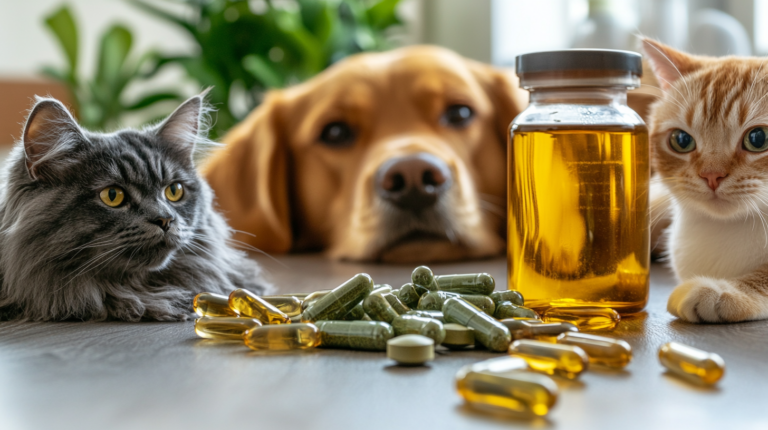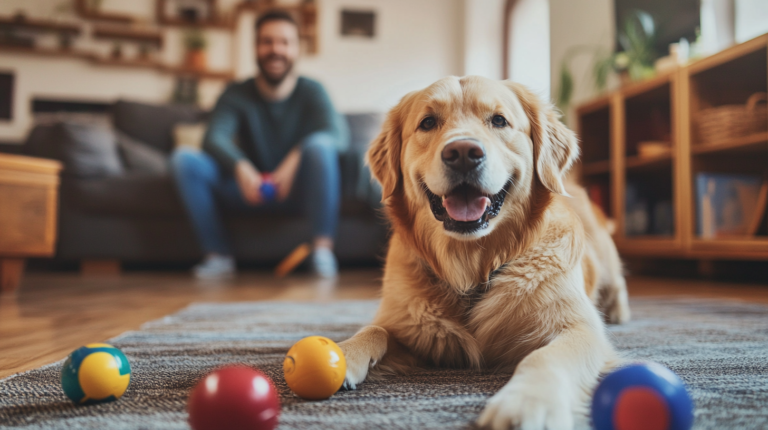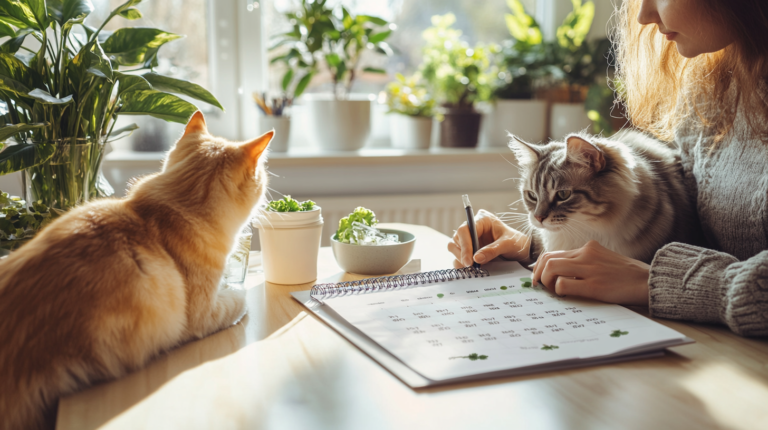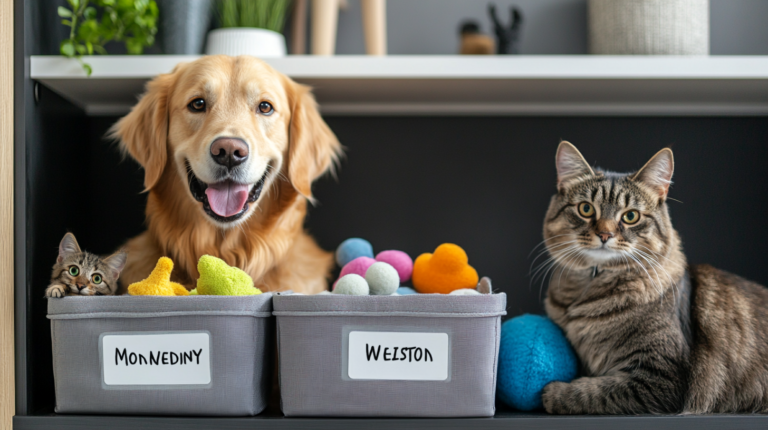Discover 3 powerful, vet-approved routine for pet anxiety that transform stressed pets into calm companions. Science-backed methods for lasting relief.
Table of Contents
Introduction: Understanding Pet Anxiety
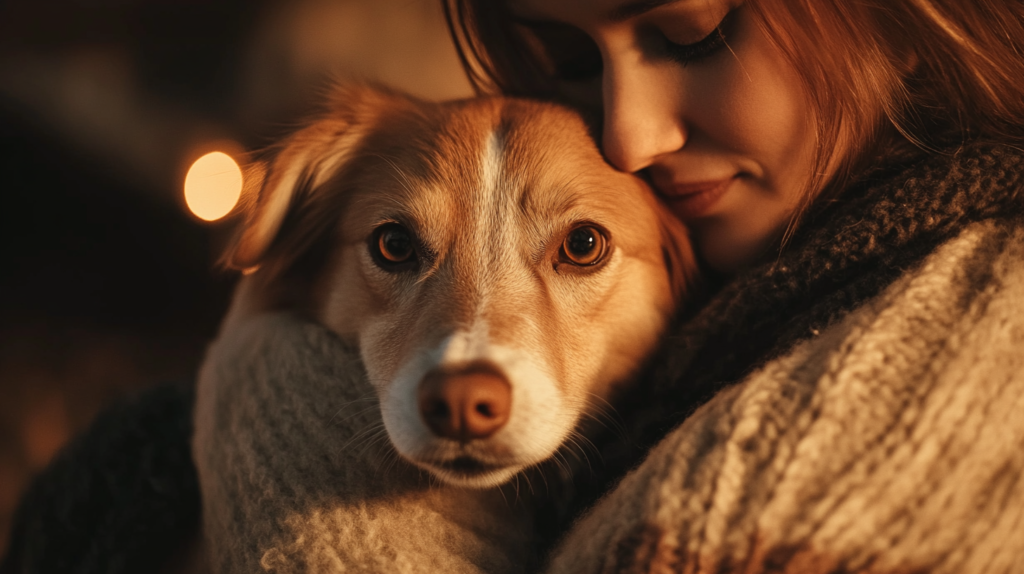
Establishing a consistent routine for pet anxiety can transform your furry friend’s life. Whether your pet suffers from separation anxiety, noise phobias, or general nervousness, implementing structured daily practices can dramatically reduce stress behaviors and improve their overall quality of life. As pet parents, witnessing our beloved companions suffering from anxiety can be heart-wrenching, but the good news is that with patience and dedication, you can help them find relief through carefully designed routines.
According to the American Veterinary Medical Association, approximately 20-40% of dogs and cats experience some form of anxiety during their lifetime. These anxious behaviors—from excessive barking and destructive chewing to inappropriate elimination and self-harm—stem from your pet’s instinctual response to perceived threats. By creating predictable patterns and safe spaces, you’re speaking directly to your pet’s primal need for security and stability.
In this comprehensive guide, we’ll explore three powerful, scientifically-backed routines for pet anxiety that have helped countless anxious pets regain their confidence and joy. Each routine combines environmental management, behavioral modification, and, when appropriate, supplemental support to address anxiety at its core rather than merely masking symptoms.
Why Routines Matter for Anxious Pets
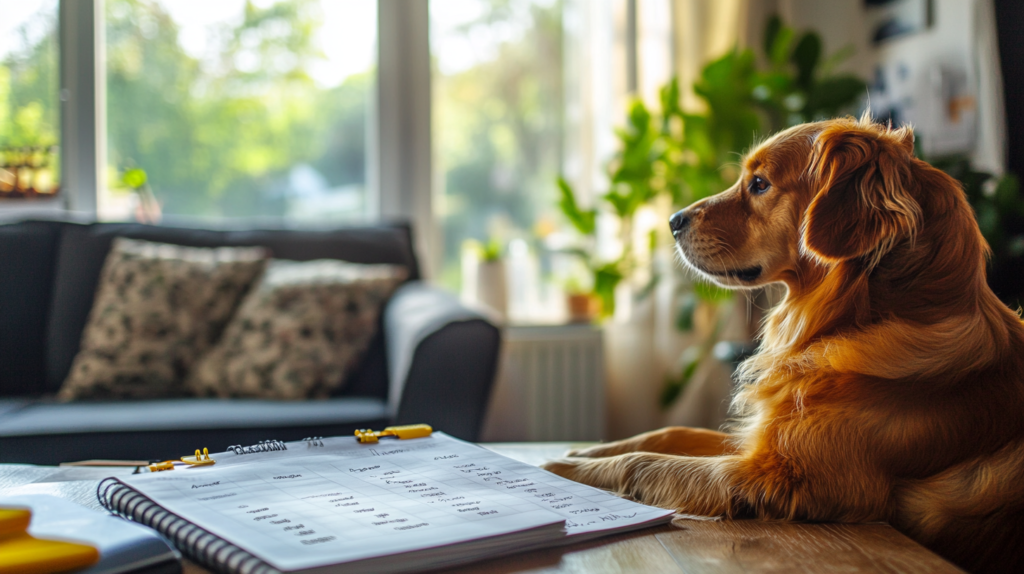
Before diving into specific anxiety-relief routines, it’s important to understand why routines are particularly beneficial for pets with anxiety disorders. Dr. Karen Overall, veterinary behaviorist and author of “Clinical Behavioral Medicine for Small Animals,” explains that “predictability is perhaps the single most important factor in managing anxiety in companion animals.”
The Science Behind Routine and Anxiety
When pets experience anxiety, their bodies enter a state of physiological arousal—heart rate increases, stress hormones flood their system, and their fight-or-flight response activates. This state of hyperarousal makes it difficult for them to relax, learn, or respond appropriately to their environment.
Routines provide several key benefits that directly counteract this anxiety response:
- Predictability reduces uncertainty: When pets can anticipate what happens next, their brains don’t need to remain on high alert.
- Consistency builds security: Regular patterns create a sense of safety and control.
- Structured activities channel energy: Appropriate physical and mental exercise within a routine helps reduce stress hormones.
- Clear expectations reduce frustration: When pets understand what’s expected, they experience less conflict and anxiety.
A 2021 study in the Journal of Veterinary Behavior found that dogs with established daily routines showed significantly lower cortisol levels (a stress hormone) than those with irregular schedules, demonstrating the physiological impact of routine on anxiety.
Routine #1: The Morning Mindfulness Protocol

The Morning Mindfulness Protocol is designed to start your pet’s day with calm confidence rather than anxious anticipation. This routine for pet anxiety focuses on creating a peaceful morning experience that sets the tone for the entire day.
Components of the Morning Mindfulness Protocol
1. Consistent Wake-Up Time
Set your alarm for the same time each morning—including weekends. This consistency helps regulate your pet’s internal clock and reduces the anxiety that can come from unpredictable schedules.
Dr. Nicholas Dodman, professor emeritus at Tufts University’s Cummings School of Veterinary Medicine, notes: “Animals thrive on routine. When meals, walks, and attention happen at predictable times, pets feel more secure and less anxious.”
2. Calm Greeting Ritual
When you first interact with your pet in the morning:
- Avoid overly excited greetings that can heighten arousal
- Speak in a soft, soothing voice
- Use slow, deliberate movements
- Make gentle, sustained contact rather than quick pats
This calm approach helps your pet understand that mornings aren’t a time for heightened emotions but for peaceful connection.
3. Structured Morning Exercise
Incorporate 15-30 minutes of appropriate physical activity, tailored to your pet’s species, breed, age, and health status:
For Dogs:
- A steady-paced walk focusing on sniffing rather than distance
- Gentle fetch games with clear beginning and end signals
- Simple nose work exercises like hiding treats in easy-to-find locations
For Cats:
- Interactive wand toy play with predictable movements
- Foraging puzzles that engage hunting instincts
- Clicker training for simple behaviors with guaranteed success
The key is making this exercise predictable rather than intense—you’re aiming to release energy in a controlled way that doesn’t overstimulate.
4. Mindful Mealtime
Transform breakfast from a rushed experience to a calming routine:
- Use puzzle feeders or snuffle mats to slow down eating and engage the mind
- Implement a simple “wait” cue before meals to build impulse control
- Maintain the same feeding location away from high-traffic areas
- Consider split feeding smaller portions to create more predictable eating patterns
A 2019 study published in Applied Animal Behaviour Science found that dogs who worked for their food through puzzle feeders showed reduced anxiety behaviors compared to those fed from regular bowls.
5. Departure Preparation
If your pet experiences separation anxiety, this final morning component is crucial:
- Begin departure cues (picking up keys, putting on shoes) at least 30 minutes before actually leaving
- Practice these cues randomly throughout morning without leaving to desensitize your pet
- Provide a special morning “comfort item” that appears only during alone time
- Keep actual departures low-key and brief
Implementation Schedule for Morning Mindfulness
| Week | Focus Area | Actions |
| 1 | Consistent timing | Establish same wake-up time and morning sequence |
| 2 | Calm interactions | Practice speaking softly and moving slowly during morning routine |
| 3 | Exercise structure | Introduce appropriate morning activity with clear start/finish signals |
| 4 | Mealtime enrichment | Begin using puzzle feeders and wait cues |
| 5 | Departure practice | Start desensitization to leaving cues |
| 6 | Full integration | Combine all elements into seamless morning routine |
Pet parent Sarah Thompson noticed remarkable changes after implementing this morning routine with her anxious rescue dog, Max: “Within three weeks, Max went from pacing anxiously all morning to actually relaxing after breakfast. The transformation was incredible—he now settles on his bed with a puzzle toy instead of following me frantically around the house.”
Routine #2: The Midday Regulation Reset
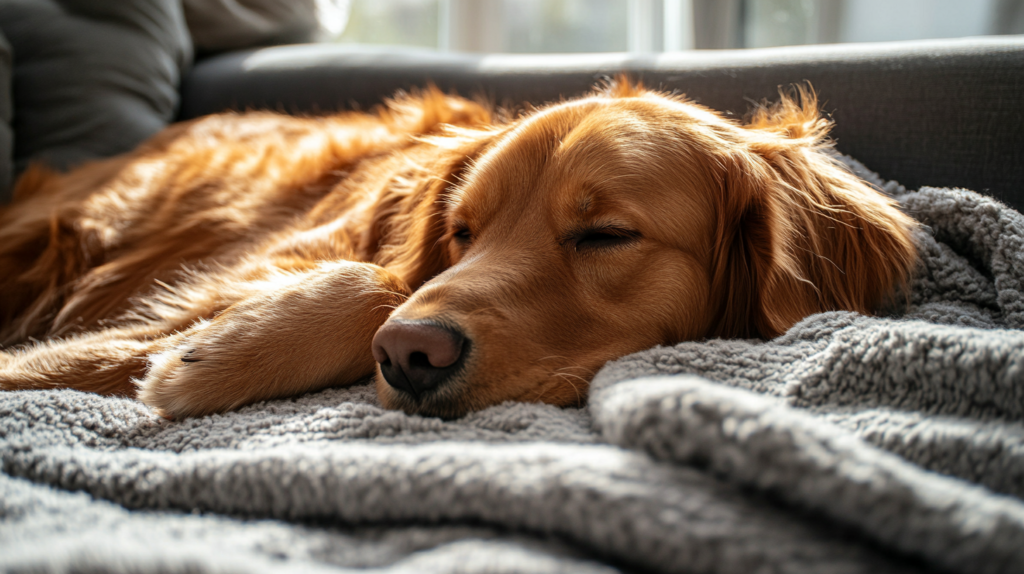
Even pets with established morning routines can experience anxiety spikes during the middle portion of the day, especially if left alone or exposed to unpredictable environments. The Midday Regulation Reset provides structure during what can otherwise be an anxiety-producing time.
Components of the Midday Regulation Reset
1. The Sensory Sanctuary
Create a dedicated space where your pet can retreat that incorporates anxiety-reducing sensory elements:
- Visual calm: Position the space away from windows or cover windows with film that allows light but blocks stimulating views
- Auditory comfort: Provide consistent white noise, classical music, or specially designed pet relaxation sounds
- Olfactory security: Use species-appropriate calming scents (lavender for dogs, catnip or silver vine for cats)
- Tactile reassurance: Include items with your scent and varying textures for comfort
Research from the Scottish SPCA and University of Glasgow found that classical music reduced stress behaviors in shelter dogs by up to 50%. Creating your own “sensory sanctuary” brings this evidence-based approach into your home.
2. Midday Mental Enrichment
Anxiety often peaks when pets lack appropriate stimulation. Schedule mentally engaging activities that promote problem-solving rather than physical exertion:
For Dogs:
- Frozen Kong toys with healthy fillings that take 20-30 minutes to complete
- Scatter feeding dry food in safe indoor areas
- Rotation of puzzle toys with increasing difficulty levels
For Cats:
- Food puzzles that require manipulation to release kibble
- Treat balls that dispense rewards with movement
- New climbing routes with hidden treats at various heights
Dr. Sophia Yin, renowned veterinary behaviorist, emphasized that “mental exercise can be even more tiring than physical exercise” for anxious pets. This midday mental workout helps deplete stress hormones while building confidence.
3. The Micro-Training Session
Brief, positive training sessions provide structure while reinforcing your bond:
- Keep sessions to 3-5 minutes maximum
- Focus on behaviors your pet already knows well to build confidence
- Use a high success rate (aim for 90% correct responses)
- End on a guaranteed success with abundant praise
If you’re away during the day, consider:
- Automated treat dispensers that can be triggered remotely
- Pet sitters who can perform this routine consistently
- Doggy daycare facilities that incorporate structured training breaks
4. The Midday Check-In Protocol
For pets with separation anxiety, midday contact can either help or harm depending on implementation. Follow these guidelines:
- Keep check-ins consistent in timing and duration
- Use a specific “check-in” phrase or signal that’s only used during these times
- Avoid excited greetings or sad departures
- Focus on calm presence rather than energetic interaction
Pet camera systems can help you monitor anxiety between check-ins, allowing you to assess whether your routine is working.
Customizing the Midday Reset for Different Anxiety Types
| Anxiety Type | Midday Focus Areas | Avoid |
| Separation Anxiety | Predictable check-ins, scent items | Irregular contact, emotional departures |
| Noise Phobia | Sound masking, safe space access | Exposure to trigger sounds, confinement |
| General Nervousness | Confidence building exercises, familiar toys | New items, challenging puzzles |
| Social Anxiety | Solo enrichment, minimal interruptions | Forced interactions, unpredictable visitors |
This routine for pet anxiety has proven particularly effective for pets who seem fine in the morning but become increasingly agitated as the day progresses. By interrupting the anxiety cycle midday, you prevent the escalation that often leads to destructive behaviors or panic attacks later.
Routine #3: The Evening Unwinding System
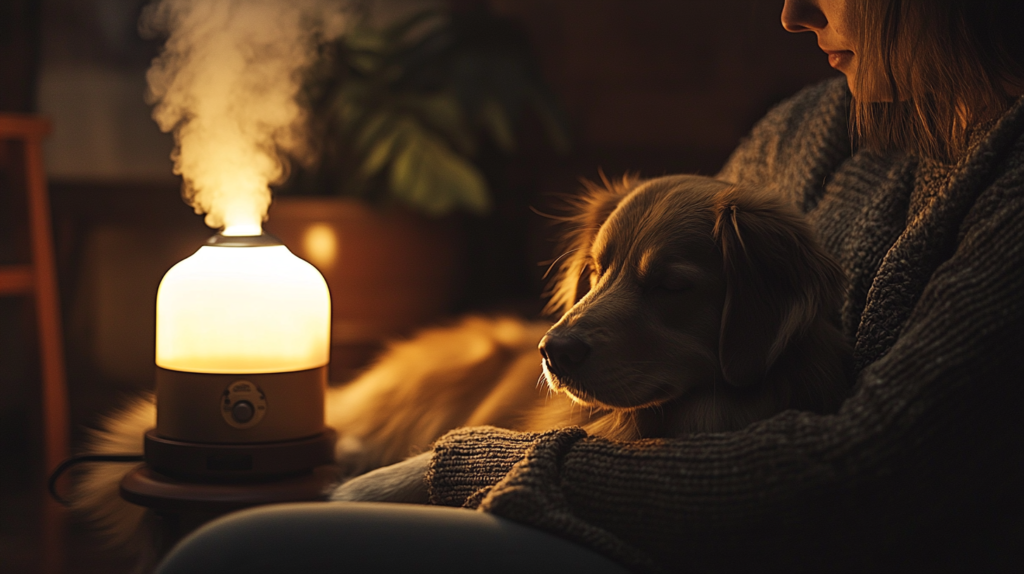
The final hours of the day are critical for anxious pets. The Evening Unwinding System creates a predictable sequence that signals safety and promotes restorative sleep—essential for managing anxiety long-term.
Components of the Evening Unwinding System
1. The Decompression Walk
Unlike morning exercise focused on physical exertion, the evening decompression walk serves a different purpose:
- Use a longer leash (10-15 feet) in a quiet, familiar area
- Allow your dog to set the pace and direction within safety parameters
- Focus on sniffing opportunities rather than distance covered
- Keep the route consistent to reduce new stimuli
For cats, a similar concept applies with supervised outdoor time in a catio or enclosed garden, or indoor “territory patrol” time where they can explore enriched spaces.
Certified animal behaviorist Patricia McConnell explains that “allowing dogs to sniff and explore at their own pace is one of the most effective ways to reduce stress hormones.” This natural behavior activates the parasympathetic nervous system, counteracting anxiety’s fight-or-flight response.
2. The Calming Cue Sequence
Develop a series of subtle signals that prepare your pet for evening relaxation:
- Dim lights gradually over a 30-minute period
- Play the same soft music or white noise each evening
- Use a specific phrase like “time to relax” in a soothing voice
- Perform the same actions in the same order before bedtime
Over time, these cues become powerful triggers for your pet’s relaxation response through classical conditioning.
3. The Touch Therapy Session
Incorporate 5-10 minutes of appropriate calming touch:
For Dogs:
- Long, slow strokes from head to tail (3-5 seconds per stroke)
- Gentle ear massage at the base of the ears
- Chest circular motions with light pressure
For Cats:
- Slow blinks and respectful distance until they approach
- Cheek and chin scratches at their invitation
- Gentle pressure at the base of the tail if welcomed
Research published in the Journal of Veterinary Behavior confirms that specific types of touch can lower heart rate and stress hormones in anxious pets. However, respect your pet’s preferences—some anxious animals find certain touches overwhelming.
4. The Bedtime Security Ritual
End the day with a consistent security-building sequence:
- Provide a small, easily digestible bedtime snack to prevent hunger-related anxiety
- Check that your pet’s sleeping area is comfortable, familiar, and free from disruptions
- Offer a specific “bedtime-only” toy or comfort item
- Use the same farewell phrase each night if you sleep separately
For pets with severe anxiety, consider:
- A covered crate lined with your worn clothing
- A white noise machine near their sleeping area
- A DAP (Dog Appeasing Pheromone) diffuser or Feliway for cats
- A body wrap like a Thundershirt applied 30 minutes before bedtime
Weekly Evening Routine Implementation Plan
| Day | Evening Focus | Activity Duration |
| Monday | Extended decompression walk/exploration | 30-45 minutes |
| Tuesday | Abbreviated walk + extended touch therapy | 20 + 15 minutes |
| Wednesday | Normal walk + trick training with calm behaviors | 20 + 10 minutes |
| Thursday | Indoor scent games + massage | 15 + 15 minutes |
| Friday | Normal walk + extended relaxation protocol | 20 + 10 minutes |
| Weekend | Maintain consistent bedtime despite schedule changes | Standard timing |
This varied but structured approach prevents the routine from becoming stale while maintaining the predictability anxious pets need.
Marcus Lee, whose cat Luna suffered from anxiety after moving to a new apartment, shares: “The evening routine transformed our nights. Luna went from hiding under the bed and meowing all night to actually curling up next to me once we established our ‘unwinding ritual.’ The consistency was key—she now knows exactly what to expect each evening.”
Supplementary Supports for Pet Anxiety Routines
While routines form the foundation of anxiety management, certain supplements, products, and professional interventions can enhance their effectiveness when used appropriately.
Nutritional and Natural Supports
Always consult your veterinarian before adding any supplements to your pet’s regimen:
- L-Theanine: An amino acid found in green tea that promotes relaxation without sedation
- Magnolia and Phellodendron extracts: Traditional herbs shown to reduce cortisol levels
- Omega-3 fatty acids: Support overall brain health and may moderate stress responses
- Probiotics: Emerging research suggests the gut-brain connection plays a role in anxiety
Dr. Gary Landsberg, veterinary behaviorist, notes that “supplements can be helpful adjuncts to behavioral modification, but they rarely work as stand-alone solutions for significant anxiety.”
Environmental Aids
These products can enhance your routine for pet anxiety:
- Pressure wraps: Products like ThunderShirt apply gentle, continuous pressure similar to swaddling
- Calming caps/eye coverings: Reduce visual stimulation for highly reactive pets
- Pheromone products: Species-specific synthetic pheromones that mimic natural calming signals
- White noise machines: Mask unpredictable environmental sounds
Professional Support Options
Consider these interventions for moderate to severe anxiety cases:
- Behavioral consultation: A certified applied animal behaviorist can customize routines
- Veterinary behaviorist evaluation: For pets who may benefit from prescription medications
- Professional trainers: Those specializing in reactive or anxious pets can help implement routines
Creating Your Customized Anxiety-Management Routine
The three core routines outlined above—Morning Mindfulness, Midday Regulation, and Evening Unwinding—provide a framework, but effective anxiety management requires personalization. Follow these steps to tailor a routine for pet anxiety specific to your companion’s needs:
Step 1: Anxiety Baseline Assessment
Before implementing new routines, document:
- Specific anxiety triggers (sounds, situations, people, etc.)
- Times of day when anxiety typically peaks
- Physical manifestations (panting, pacing, hiding, etc.)
- Duration and intensity of anxiety episodes
This information helps you target routines to your pet’s specific needs rather than applying a generic approach.
Step 2: Routine Selection and Prioritization
Based on your assessment:
- Identify which of the three routines addresses your pet’s most significant anxiety patterns
- Start with implementing just one routine fully before adding others
- Focus on consistency with the chosen routine for at least 14 days before evaluating effectiveness
Step 3: Routine Documentation and Tracking
Create a simple tracking system:
- Record routine components completed each day
- Note any modifications needed
- Document anxiety symptoms before and after implementation
- Track sleep quality and overall demeanor changes
This data-driven approach allows you to refine routines based on real results rather than assumptions.
Step 4: Gradual Expansion
As your pet shows improvement:
- Slowly incorporate elements from additional routines
- Maintain core components that have proven effective
- Introduce new elements one at a time to identify what works
Step 5: Maintenance and Adaptation
Even successful routines require ongoing management:
- Schedule monthly routine reviews to prevent drift
- Plan for potential disruptions (holidays, moves, new family members)
- Create modified “travel versions” of routines for when you’re away from home
Common Challenges and Solutions
Even the most well-designed routines for pet anxiety can face implementation hurdles. Here are solutions to common challenges:
Challenge: Inconsistent Family Participation
Solution: Create a visual routine chart posting in a common area, assign specific routine components to family members based on their schedules and relationships with the pet, and hold weekly “pet care team” meetings to discuss consistency issues.
Challenge: Schedule Disruptions
Solution: Develop “mini-routines” that contain essential elements for days when full protocols aren’t possible. Focus on maintaining meal times, brief exercise periods, and bedtime rituals even when other elements must be abbreviated.
Challenge: Plateau in Progress
Solution: After initial improvement, some pets may plateau. Refresh routines with slight modifications to prevent habituation—change enrichment toys, alter walking routes slightly, or introduce new calm-state behaviors with the same underlying structure.
Challenge: Multiple Pet Households
Solution: Create “anxiety zones” where anxious pets can experience their routines without interference from other animals. Use baby gates, separate rooms, or elevated spaces to provide this separation when needed.
Success Stories: Real-Life Transformations Through Routine
Case Study 1: Bella the Thunderphobic Border Collie
Bella would tremble uncontrollably during storms, often hiding in the bathroom or trying to escape the house. Her owners implemented the Evening Unwinding System with a focus on the Calming Cue Sequence, training Bella to associate specific music and a pressure wrap with relaxation long before storms arrived. After six weeks, Bella could remain on her designated “safe bed” during moderate thunderstorms, significantly reducing her panic response.
Case Study 2: Oscar the Separation-Anxious Cat
When his owners returned to office work after working remotely, Oscar began urinating outside his litter box and overgrooming to the point of creating bald spots. A combination of the Morning Mindfulness Protocol and Midday Regulation Reset—including a pet sitter implementing the Micro-Training Session midday—helped Oscar adjust to the new schedule. Within a month, his inappropriate elimination stopped completely, and his fur began regrowing.
Case Study 3: Max the Reactive Rescue Dog
Max, a three-year-old mixed breed, would lunge and bark at other dogs during walks, making exercise difficult and increasing his overall anxiety. His owner committed to the Morning Mindfulness Protocol with an emphasis on structured exercise in low-distraction environments. By combining this routine with gradual counter-conditioning, Max progressed from reacting at 50 feet from other dogs to being able to walk calmly past them on the opposite side of the street.
Expert Insights: Veterinary Perspectives on Anxiety Routines
Dr. Lisa Radosta, board-certified veterinary behaviorist and owner of Florida Veterinary Behavior Service, emphasizes that “consistency is the backbone of anxiety treatment. While medications can be helpful tools, they work best when paired with predictable daily routines that reduce uncertainty for the pet.”
Dr. Marty Becker, founder of the Fear Free movement in veterinary care, adds: “Think of anxiety management as a three-legged stool—environmental management, behavior modification, and, when needed, pharmaceutical support. Routines address the first two legs, creating a foundation for success.”
Creating a Holistic Approach: Connecting Routines to Overall Wellness
The most effective routines for pet anxiety don’t exist in isolation but connect to your pet’s total wellbeing:
Physical Health Connections
Anxiety often worsens when pets experience:
- Undiagnosed pain
- Hormonal imbalances
- Sensory decline (vision or hearing loss)
- Digestive issues
Regular veterinary check-ups should be part of your anti-anxiety strategy, especially for senior pets or those with sudden anxiety onset.
Environmental Enrichment Beyond Routines
Between structured routine periods, continue to provide:
- Appropriate sensory experiences
- Species-typical outlets for natural behaviors
- Regular social interaction with familiar people and animals
- Cognitive challenges matched to your pet’s abilities
Certified animal behaviorist Karen Pryor notes that “enrichment isn’t something extra you provide—it’s meeting your pet’s fundamental psychological needs.”
Building Resilience Through Managed Challenges
While consistency is crucial, incorporating mild, controlled challenges helps build confidence:
- Slightly varied walking routes that include one new element
- New puzzle toys with familiar food rewards
- Brief introductions to new people using established greeting protocols
These “stretching but not breaking” experiences help anxious pets develop coping skills within the safety of their routines.
FAQ: Routine for Pet Anxiety
How long before I see results from implementing an anxiety routine?
Most pet owners notice subtle improvements within 7-14 days of consistent implementation, such as shorter recovery times after anxiety triggers. However, significant behavioral changes typically require 4-6 weeks of dedicated routine practice. Severe or long-standing anxiety cases may take 3-6 months to show dramatic improvement, and some pets may always require ongoing routine management.
Can I implement these routines with senior pets who have cognitive dysfunction?
Yes, but modifications are necessary. Seniors with cognitive issues benefit greatly from routines but may need shorter, more frequent segments with additional environmental cues to help them orient. For example, using specific lighting changes to signal different routine components can help seniors with declining vision or cognitive function navigate the schedule more easily. Always consult with your veterinarian about potential medical issues affecting your senior pet’s anxiety symptoms.
How do I maintain anxiety routines when I travel with my pet?
When traveling, identify the “core elements” of your pet’s routine that can be transported—familiar bedding, specific toys, and consistent verbal cues are typically portable. Prepare a “travel routine kit” including items with your scent, their usual food, and any supplements they take regularly. Most importantly, maintain meal times, exercise periods, and sleep schedules as close to normal as possible, even when locations change.
Should I adjust routines seasonally for my anxious pet?
Yes, seasonal adjustments are beneficial. Many pets experience increased anxiety during summer thunderstorm seasons or winter holidays. During predictably challenging periods, consider “upgrading” routines with additional support—perhaps extending the Evening Unwinding System during fireworks season or adding midday check-ins during holiday periods with unusual household activity. The structure should remain consistent while providing extra support during difficult times.
What if my pet seems to become more anxious when I first implement these routines?
A temporary increase in anxiety can occur as pets adjust to new patterns, similar to an “extinction burst” in behavioral terms. If your pet shows increased anxiety during the first 5-7 days of a new routine, simplify the protocol to just the essential elements and gradually reintroduce components as they adjust. However, if anxiety persists beyond two weeks or intensifies significantly, consult with a veterinary behaviorist, as your specific approach may need professional customization.
Can these routines replace anxiety medication prescribed by my veterinarian?
Never discontinue prescribed medications without veterinary guidance. These routines are designed to complement, not replace, veterinary care. Many pets experience the best outcomes with a combination of appropriate medication and consistent routines. Think of this approach as similar to anxiety treatment in humans, where both therapeutic techniques and medication often work synergistically for optimal results.
Ready to Transform Your Pet’s Anxiety?
For more expert pet care tips and product recommendations, visit BlithePet.com — your trusted source for pet wellness.
Conclusion: The Journey to Calm
Implementing a consistent routine for pet anxiety represents one of the most profound ways you can improve your anxious pet’s quality of life. Through the Morning Mindfulness Protocol, Midday Regulation Reset, and Evening Unwinding System, you provide your pet with the predictability and security they crave.
Remember that progress may not be linear—most pets have good and bad days on their anxiety management journey. The key is consistency and compassionate patience, recognizing that each small improvement represents a significant victory for your anxious companion.
By investing time in establishing these routines, you’re not just addressing symptoms but building a foundation of security that allows your pet’s true personality to emerge from behind the veil of anxiety. The calmer, more confident pet you’ll discover is worth every moment of dedicated routine practice.
Have a similar experience with your pet? Share it in the comments below!


